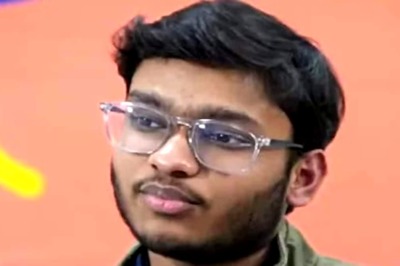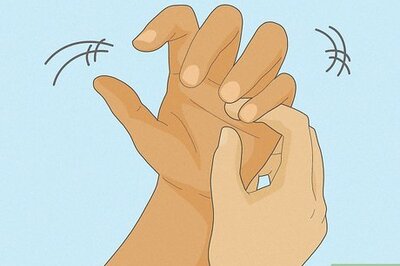
views
You might think it is quite natural for Ratheesh C Nair, Honorary Consul of the Russian Federation in Thiruvananthapuram, who is also the director of the Russian Cultural Centre in the city, to have a penchant for anything Russian. But his bonding with Russia, rather the Soviet Union, has got an interesting flashback.Before recounting that, ‘Curiocity’ would like to present his collection of Russian stuff. Sets of matryoshka dolls, Russian hats/caps, Russian dolls and a couple of World War II memorabilia dot the Russian Culture Centre at Vanross junction. Besides, almost every room of the Centre has something or the other which is Russian.“I just adore these matryoshka dolls. There is something so beautiful about them,”says Ratheesh, while posing for a snap standing alongside a bunch of them, adding his wife Sheeja and daughter Subhadra too are so fond of them. Matryoshka is the Russian nesting doll, made of wood, which is a set of dolls of increasing sizes placed one inside the other. There will be at least five nested figures in a set, but the number can go up to a dozen. “I have got one which is a set of 10 dolls.” The dolls which have a cylindrical form, have a rounded top for the head, tapering toward the bottom. The dolls have no hands. Traditionally the outer layer is a woman. The innermost doll is made from a single small piece of wood and therefore can’t be opened. “The main aspect is the painting on each doll. Now, you even get custom-made matryoshka dolls in which you can keep vodka bottles,” he adds with a smile.Let’s move to the cap collection. “What triggered my interest in collecting caps was actually the Indian cap I received while I was at the Cochin Shipyard during the visit of the Russian Ambassador.” He first got a Russian cap when Moskva (meaning Moscow), a Russian missile carrier, anchored on the Kerala shores. A mushroom cap followed. It was gifted to him by Svetlana Shetrakova, director of the Moscow State Museum of South Esenin, Russia. “When I was in Russia, she had returned after a Bulgarian trip and she got me this Bulgarian cap made of mushroom.” A trip to Siberia gave him a cap made using the bark of the pine tree. “It was actually the pine cap that really got me serious about the collection. Now I have caps worn by Russian Army and Air Force personnel.”The World War II memorabilia is not elaborate. But he really cherishes the two caps which were used then by the Soviet Red Army. One of them has all the Russian emblems. The other was used by the Army during winter, ie the Soviet Budionovka cavalry hat. Another World War related stuff is the wireless set which was used by the Red Army.The only non-Russian director of the total 56 Russian Cultural Centres across the world, his bonding with the former Soviet Union dates back to those days when he was very active in the Indo-Soviet activities, thanks to the Soviet Cultural Centre which was functioning in the city since 1975. In 1987, the Centre hosted the Festival of Soviet Union and he was chosen to be part of a team chosen to receive a Soviet delegation. The Chief Editor of ‘Around the World’ magazine became so impressed with Ratheesh that he presented him a special badge. “But that closeness irked one of my teachers. That behaviour from my Sir in fact gave me the resolve that at any cost I would go to Russia one day.” He took a membership at the Soviet Centre, then headed by Valery Budaragin. Russian films and his acquaintance with a team of gypsy musicians led by Valery Mashtakov told him a lot about Russia, its people and culture. He eventually got a scholarship to study medicine in Soviet Union. But the country got disintegrated and so he couldn’t practise. He switched over to business, only to become a successful entrepreneur. Years passed by and he was destined to play a prominent part in reopening the Soviet Centre which was closed after the fall of the Soviet Union. He became the director of the Centre in 2000 and was recognised as the Honorary Consul in 2008. A sweet revenge, indeed!
















Comments
0 comment